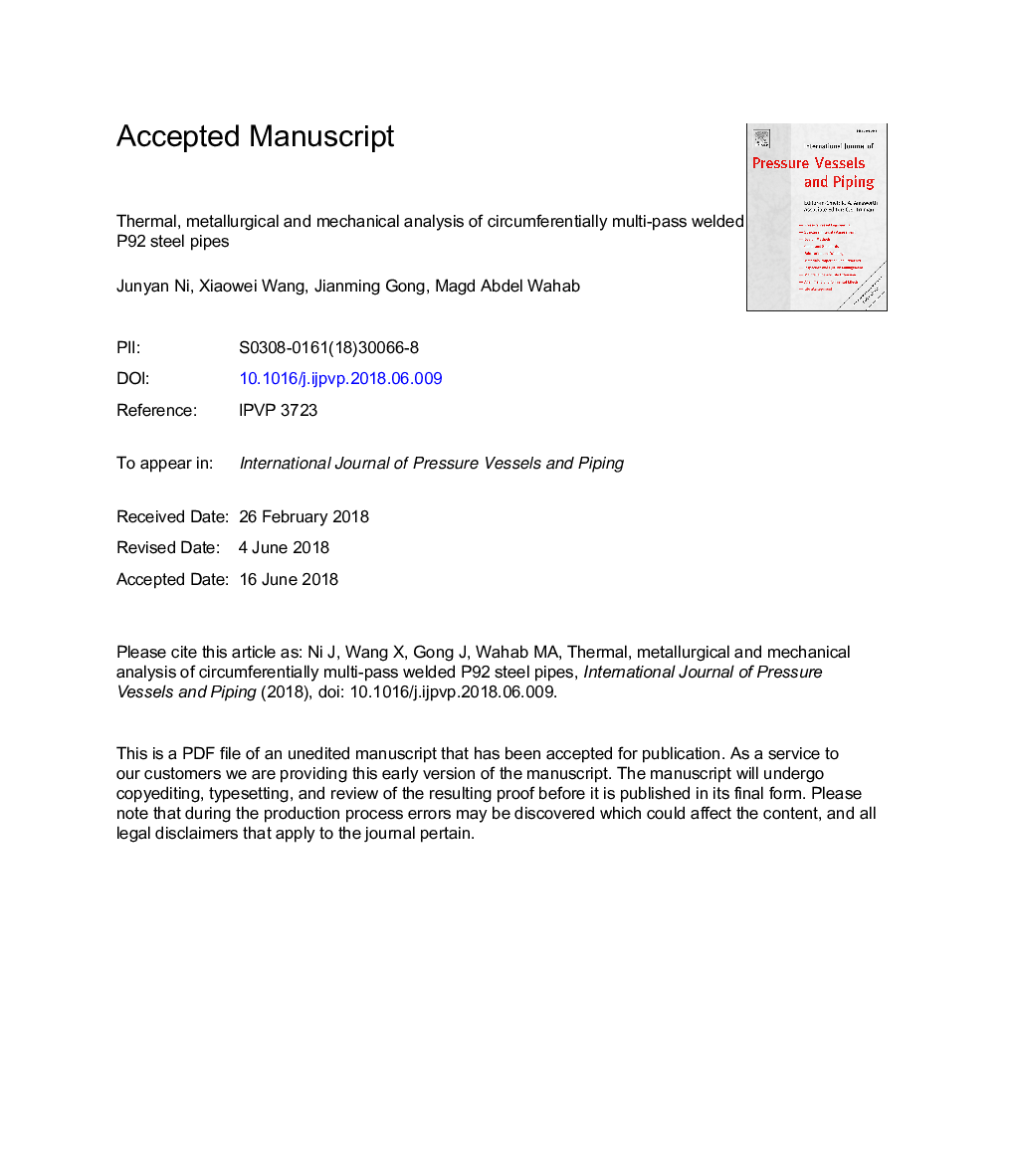| Article ID | Journal | Published Year | Pages | File Type |
|---|---|---|---|---|
| 7175015 | International Journal of Pressure Vessels and Piping | 2018 | 29 Pages |
Abstract
A coupled thermo-metallo-mechanical model is proposed to analyse the temperature, stress and microstructure fields in multi-pass welding of P92 pipes. An axisymmetric model is adopted to increase the efficiency of the simulation. To preserve the temperature field from a three-dimensional (3D) analysis, a procedure is proposed to convert the 3D result into a two-dimensional (2D) form, which is compared to temperature fields created by other 2D heat transfer analyses. A metallurgical algorithm, which does not need the calibration with metallurgical experiments, is implemented in the finite element (FE) analysis to predict spatial distributions of product phases during multi-pass welding. Comparison between the predictions and the metallurgical graphs is made to verify the effectiveness of the metallurgical analysis after twenty thermal cycles. Hardness test is also employed to characterize the microstructure and to validate the metallurgical predictions. Five temperature fields, one created from the newly proposed approach and four from existent ones, are used as external loads to conduct the mechanical analysis. The volumetric change due to the phase transformation is considered as an extra volumetric strain, which is implemented by user subroutine. The stress distributions predicted using the five temperature fields are plotted together with the 3D stress result to examine the effectiveness of the developed procedure. The stress at the external surface of the pipe is measured by the X-ray diffraction technique, and is further compared to the stress predictions. The advantage of the model is demonstrated by comparing the computational time consumed in the mechanical analysis.
Related Topics
Physical Sciences and Engineering
Engineering
Mechanical Engineering
Authors
Junyan Ni, Xiaowei Wang, Jianming Gong, Magd Abdel Wahab,
